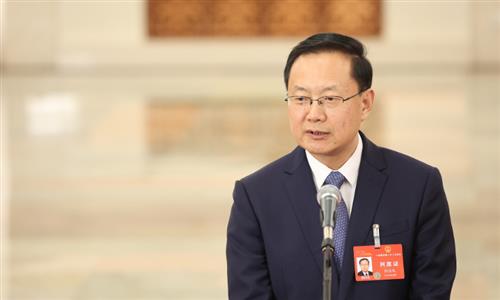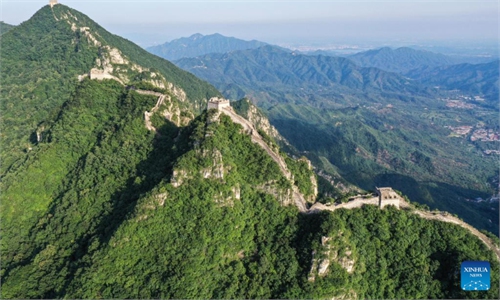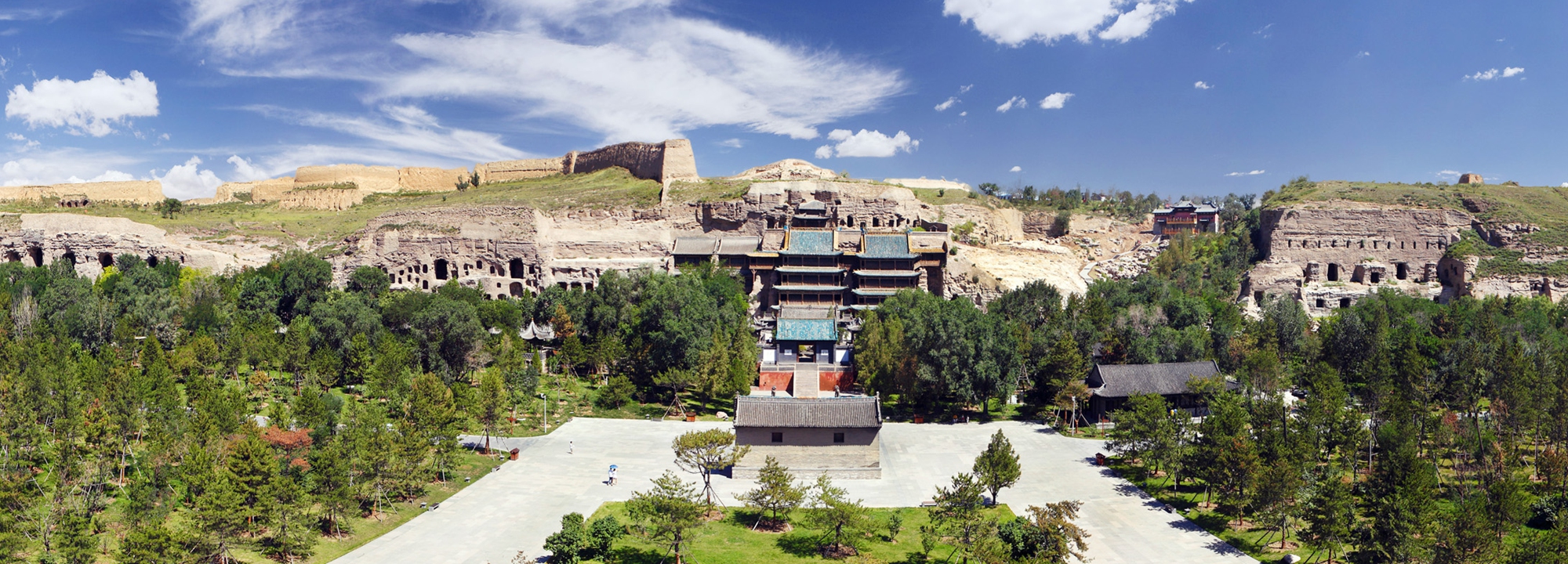
The Yungang Grottoes in Datong, Shanxi Province Photo: Courtesy of Sun Bo
In the western suburb of Datong, North China's Shanxi Province, nestled against the southern slope of Mount Wuzhuo, stand the majestic figures of the Yungang Grottoes, a testament to the enduring beauty of 1,000 years. These colossal Buddhas, towering and awe-inspiring, continue to draw a steady stream of visitors who come to witness the grandeur of this World Cultural Heritage site. Sun Bo maintains a piece of relics at the Yungang Grottoes. Photo: Courtesy of Sun Bo Buddhas at the Yungang Grottoes in Datong, Shanxi Province Photo: Courtesy of Sun Bo
Sun Bo, a native of Datong and a "doctor of cultural relics" from the chemistry group of the restoration department, has been visiting the Yungang Grottoes since his childhood, often accompanied by his parents. The profound visual impact of the giant Buddhas left a deep impression on him. Little did he know that, after graduation, he would return to his hometown as a cultural relic restorer, and his life was intertwined with the Yungang Grottoes once more.
"Walking among the Yungang Grottoes, sometimes I feel as if I were one of the ancient craftsmen who carved these caves. My colleagues and I cherish the grottoes and our passion for cultural relic restoration. It is our duty and mission to heal and revitalize the 'old man,' preserving his 'soul' and the precious history behind him," Sun told the Global Times.
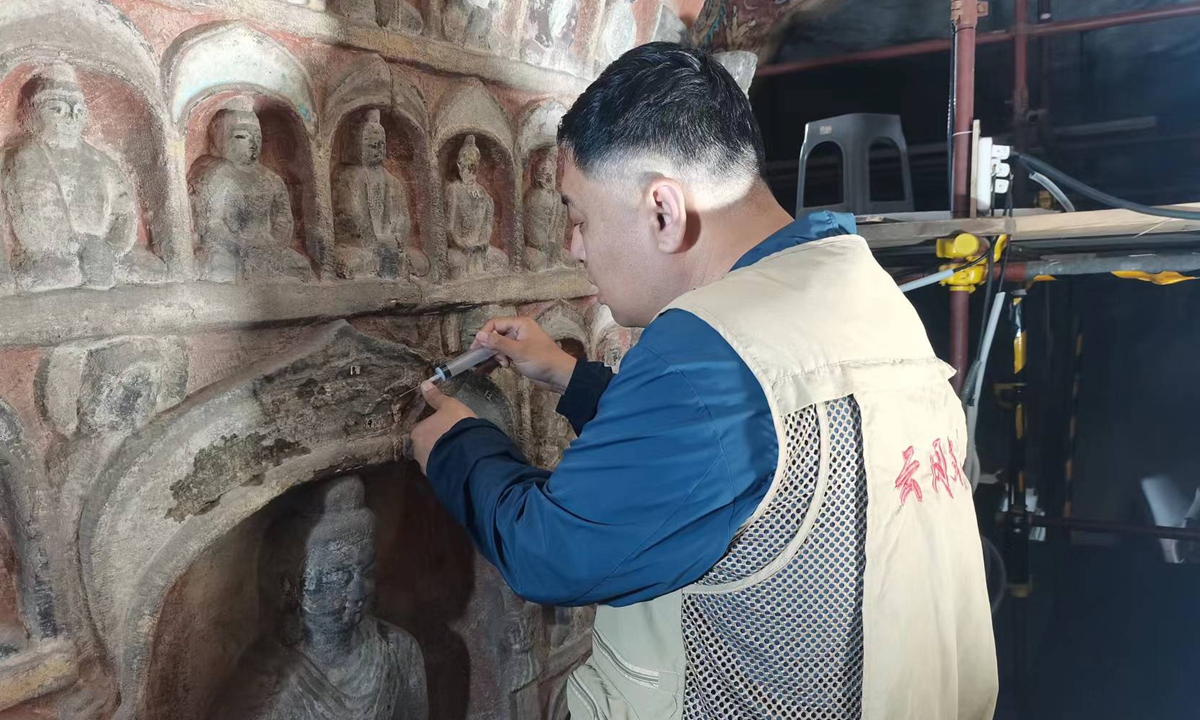
With over a decade of experience, Sun no longer sees the Yungang Grottoes merely as a lifeless tourist site but as 1,000-year-old elder, silently waiting for the cultural doctors to discover and address his health issues.
Sun said he has witnessed a transformation in the methods of cultural relic restoration, thanks to the rapid development of technology in China and the deep integration of interdisciplinary approaches into the field of archaeology.
"In terms of conservation philosophy, the biggest change we have made is shifting from the 'protector's perspective' that might be subjective to 'what kind of protection the cultural relics themselves need based on data,'" Sun explained.
"Data is like a medical report for a person as it tells us where the problem lies," he said. As a 1,500-year-old "elder," the Yungang Grottoes have suffered from weathering and human destruction, and they face varying degrees of erosion with some caves needing overall enhanced stability.
Since the 1960s, the Yungang Grottoes have undergone emergency reinforcement, rock reinforcement, and drainage projects, effectively addressing the stability issues of the caves. In recent years, on the basis of ensuring the safety of the grottoes, the Research Institute of Yungang Grottoes has carried out a series of preventive conservation and fine maintenance projects.
"The protection of the Yungang Grottoes has evolved from emergency restoration to technological protection and now to digital protection," Sun said. In the past, people would only repair the Buddha statues when they were damaged; but with the development of archaeology and the continuous renewal of archaeological concepts, the current principle is "prevention first, combining prevention and treatment, and restoring the old to its original state."
Over 1,000 years, due to the effects of various natural forces, the weathering phenomenon of the grottoes has been very serious. Decades of research have shown that although there are many reasons for the weathering of the grottoes, water is one of the main causes of the weathering of the Yungang stone carvings.
For example, during the rainy season, rainwater flows down the mountain and into the caves, carrying a certain amount of salt. When the sun comes out, the water evaporates on the surface of the grottoes, leaving excess salt on the surface of the statues, making regular desalination an effective means to slow down the weathering of the grottoes.
How do cultural doctors determine what diseases the grottoes have? Sun said that thanks to the multiple disciplines, including chemistry, physics, biomedicine, geology and more, the restoration of cultural relics is now very convenient.
For example, with the help of medical ultrasound testing equipment, cultural relic restorers can perform an "ultrasound" on the grottoes. Ultrasound travels faster and has higher values in dense structures, and vice versa in loose areas. For "diseases" that appear inside the rock body and are difficult to observe with the naked eye, an "ultrasound" can clearly identify them.
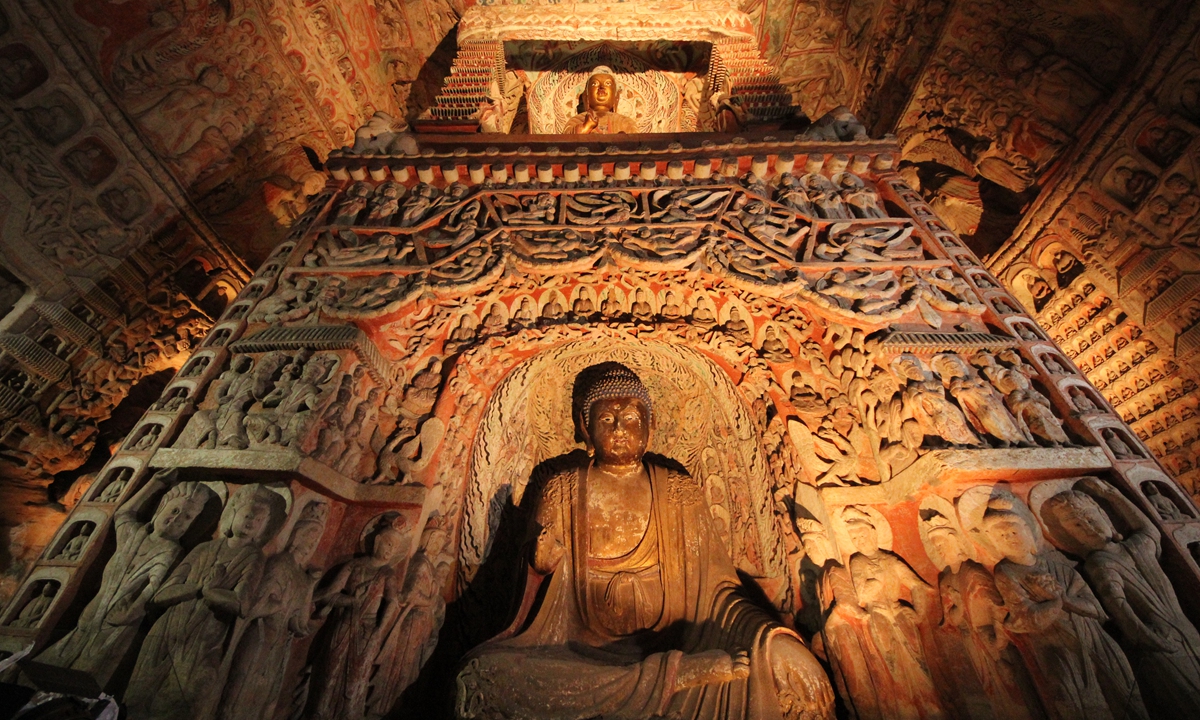
Since Sun can closely contact these Buddha statues, he said that he can more deeply appreciate the wisdom of the ancient Chinese. For example, in ancient times, in order to save time, some ancient Chinese craftsmen may not have used fine carving at the end of the Buddha statue. Because the Buddha statue is huge, tourists can't see these details, but this could only be observed by the "cultural doctor" like Sun.
Looking back on his more than 10 years of work experience, Sun is still very excited about helping a Yungang statue that was lost in the US to successfully return to the motherland.
In 2014, a Chinese-American donated a bust of the Yungang Grottoes statue that had been lost overseas and is now preserved at the National Museum of China. At that time, the donor required Chinese staff to find out which cave of the Yungang Grottoes this bust came from. After careful investigation, Sun finally found the origin of this Buddha statue, facilitating the successful return of the lost cultural relic.
"Every time I go to the National Museum, I 'pay a visit' to this Buddha statue. In addition to being excited, I also have a great sense of achievement," Sun said, adding that after working in this industry for a long time, he feels that this job gives him a sense of calm; and when he encounters some trouble in life, he is also able to be more calm and look at things from multiple angles.
Sun hopes more young people can join this cultural relic restoration team, and wishes for more cultural relics from the Yungang Grottoes lost overseas to be returned to the motherland, and back to Yungang.

